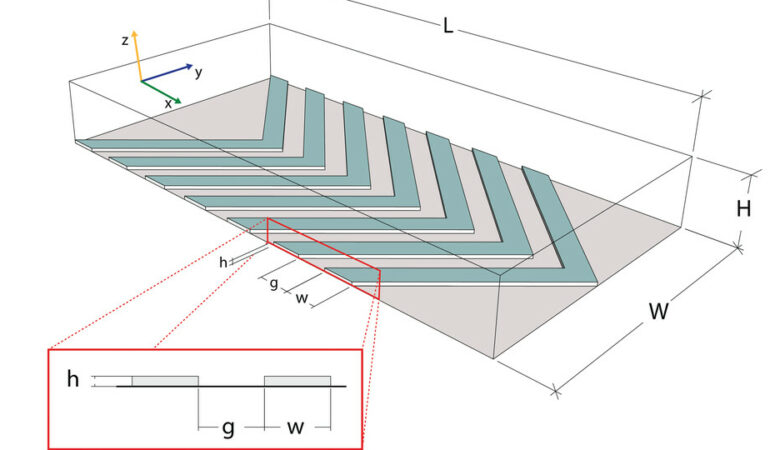
- by Alessio Meggiolaro
- 31/05/2023
Boost and Contraction of Flow by Herringbone Surface Design on the Microfluidic Channel Wall
D. Filippi, L. Derzsi, F. Nalin, A. Vezzani, D. Ferraro, A. Zaltron, G. Mistura, M. Pierno
Advanced Materials Technologies (2023), 2201748
Abstract
The handling of yield-stress fluids typically involves a jammed-to-flow transition that is pivotal for many injection and transport technologies on different scales, such as additive manufacturing, injection molding, food rheology, and oil transport. For all of these applications, it is crucial to be able to tune the fluidization under constant load. The pressure-driven flow of emulsions is reported within a microfluidic channel, one wall of which is patterned by a herringbone-riblet roughness comprising a regular array of V-shaped grooves. With respect to the pressure gradient, this pattern displays a convergent (divergent) orientation that provides a forward (backward) direction. At the tip of the herringbone pattern, the forward and backward flows are almost identical for a viscous Newtonian fluid and a diluted emulsion, whereas a surprising flow boost in the forward direction is observed as the emulsion approaches a jammed state. The flow boost is more effective at small herringbone angles and low pressure loads. 3D velocity profiles along the channel cross-section unravel unexpected heterogeneous stress, band-like distributed, with evidence of nonlocal correlations.
